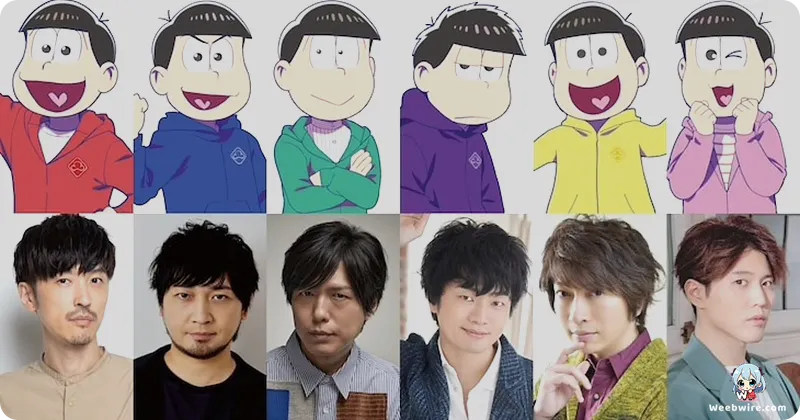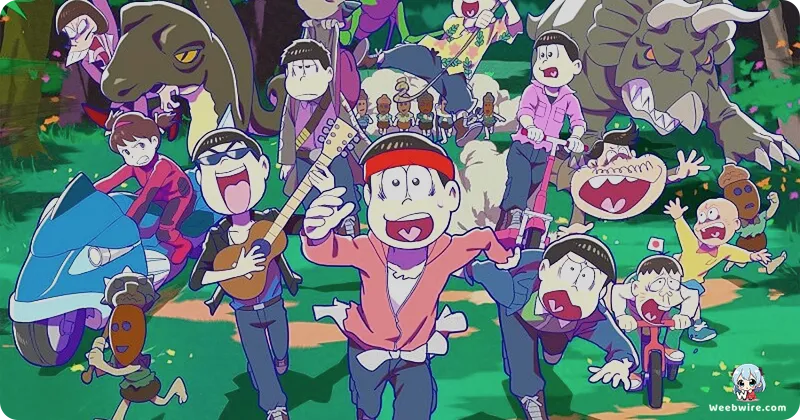The Unseen Depths of Mr. Osomatsu: From Controversial Debut to Cultural Phenomenon

When Mr. Osomatsu (Osomatsu-san) burst onto the anime scene in October 2015, it didn't just arrive; it exploded, instantly becoming a cultural phenomenon that redefined comedic anime for a new generation. This vibrant, often unhinged tribute to manga legend Fujio Akatsuka reimagined his iconic sextuplets from Osomatsu-kun, catapulting them into a contemporary setting with audacious humor and sharp satire. While its chaotic energy and irreverent spirit quickly garnered a massive following, the series holds many intriguing facets concerning its production, profound cultural impact, and the remarkable evolution of its characters that offer delightful and insightful revelations.
The Audacious Premiere and Its Aftermath
The series' audacious spirit was immediately evident from its very first episode, aptly titled 'Osomatsu-san Has Arrived'. This premiere was a daring, no-holds-barred parody of contemporary anime hits, lampooning everything from idol anime and sports shonen to popular magical girl tropes with breathtaking speed and unreserved hilarity. This bold move, while brilliantly establishing an irreverent and unpredictable tone for the series, proved to be quite controversial. The episode was largely pulled from streaming services and home video releases shortly after its initial broadcast due to potential copyright infringements and its sheer audacity in satirizing other major franchises. This behind-the-scenes censorship, far from hindering the show, ironically amplified Mr. Osomatsu's rebellious image, transforming the 'lost' episode into a legendary piece of anime trivia. It also powerfully signaled a distinct and radical departure from its more innocent Osomatsu-kun roots, setting the stage for a truly unique comedic experience.
From Mischievous Kids to Hopeless NEETs
Perhaps the most surprising and brilliant aspect of Mr. Osomatsu is its radical divergence from its beloved source material. The original 1962 Osomatsu-kun depicted the six Matsuno brothers as mischievous elementary schoolers, embodying a simpler, more innocent form of slapstick comedy. The 2015 iteration, however, fast-forwards fifty years, presenting them as adult NEETs (Not in Education, Employment, or Training) – still identical in appearance, but now distinctly individual in their personalities and utterly hopeless at adult responsibility. This ingenious narrative choice created a fresh and fertile comedic landscape, masterfully contrasting their idealized, carefree youthful past with their stagnant, often pathetic adult reality. The series cleverly references iconic elements from the original series, such as Iyami's famous 'Sheeeh!' pose, but recontextualizes them through the lens of the brothers' adult failures, seamlessly blending nostalgic callbacks with cutting contemporary satire. This transformation is key to the show's unique charm and its ability to appeal to both long-time fans and newcomers.

The Powerhouse Voice Cast
One of the most delightful revelations for fans and critics alike concerns the extraordinary vocal talents behind the sextuplets. The series boasts a truly star-studded cast of veteran male voice actors, each a titan in the industry: Takahiro Sakurai (Osomatsu), Yuichi Nakamura (Karamatsu), Hiroshi Kamiya (Choromatsu), Jun Fukuyama (Ichimatsu), Daisuke Ono (Jyushimatsu), and Miyu Irino (Todomatsu). Their legendary collective performance as the Matsuno brothers is not merely professional; it is profoundly enhanced by their real-life camaraderie and palpable chemistry, making the incessant sibling squabbles and affectionate jabs feel incredibly authentic and dynamic. Their distinct vocalizations, coupled with their impressive improvisational flair, solidified each sextuplet's unique personality, aiding differentiation despite their identical character designs. This unparalleled synergy among the cast is a pivotal reason for the show's deep and enduring appeal, creating a truly unforgettable and hilarious ensemble that elevates the comedic timing and emotional resonance of every scene.
An Unexpected Fandom and Social Commentary
The passionate fan base that coalesced around Mr. Osomatsu offers another captivating insight into its widespread appeal. While the original Osomatsu-kun had broad appeal, the 2015 iteration unexpectedly resonated powerfully with a significant female demographic, particularly the fujoshi community. The brothers' clearly defined personalities, the playful and often self-aware homoerotic subtext (which the creators themselves acknowledged and satirized), and the undeniable charisma of the voice cast ignited an explosive wave of fan art, compelling fanfiction, and fervent merchandise sales. This surge in popularity among a new and diverse demographic brilliantly showcases the power of astute character design, exceptional voice acting, and sharp comedic writing to transcend traditional genre boundaries. The creators were keenly aware of this phenomenon, often incorporating meta-commentary on their burgeoning fandom directly into the show, further endearing them to their audience.
Finally, the series' subtle yet impactful commentary on Japanese society, especially the immense pressures on young adults and the pervasive stigma of being a NEET, adds a profound layer of depth beneath its comedic surface. While often presented through absurd and exaggerated scenarios, the brothers' inability to integrate into conventional society and their pervasive aimlessness subtly mirror genuine anxieties faced by many in modern Japan. The show ingeniously employs the absurd to highlight mundane struggles, transforming a side-splitting comedy about jobless brothers into a surprisingly relatable, albeit highly exaggerated, reflection of contemporary societal issues. This rich thematic undertone, coupled with its unwavering commitment to absurdity and its heartfelt tribute to Fujio Akatsuka's legacy, ensures Mr. Osomatsu endures as a memorable and singularly impactful entry in the anime landscape, a true testament to how a beloved classic can be reimagined with both reverence and revolutionary flair.
Credits
Mr. Osomatsu
Author
Fujio Akatsuka (original manga 'Osomatsu-kun')
Cover Art
Naoyuki Asano (Character Designer)
Studio
Studio Pierrot
Publisher
Shogakukan (original manga)
Producers





